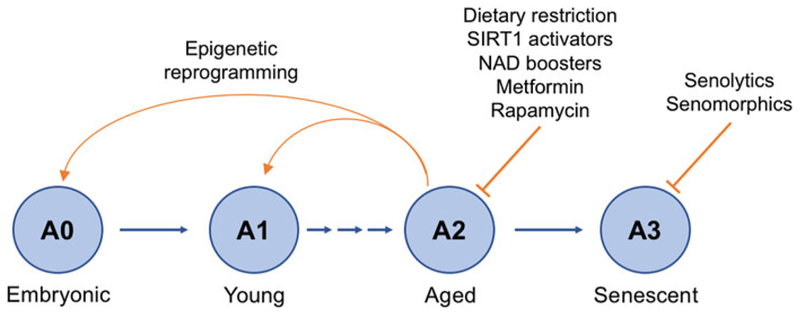Figure 3.
Interventions to prevent the stages of aging. Aging has four main stages: A0, when an organism/cell is young and healthy; A1, when the organism/cell begins to age; A2, when the organism/cell is aged; and A3, when the organism/cell is senescent. Interventions that delay or prevent aging can act at each of these stages such as calorie restriction, which prevents the aging process at A2. Rapamycin can increase lifespan even when started in later life and acts at A2 and senolytics/senomorphics that act to selectively remove or inhibit the deleterious effects of senescent cells act at stage A3. Reprogramming, the resetting of the epigenetic landscape using specific transcription factors, such as Yamanaka factors, can return cells from the A2 stage to the young A0 stage. Whether or not it is possible to safely reset cells to A1 without risking tumorigenesis is not yet known (see the color version of this figure at www.tandfonline.com/ibmg).

